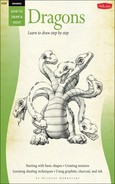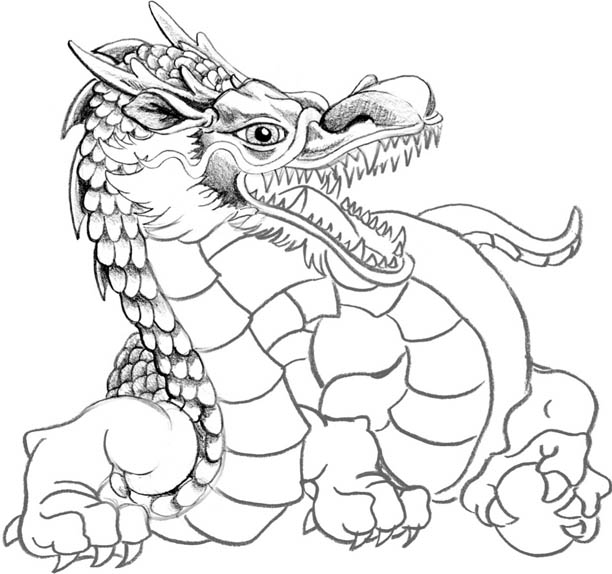Eastern dragons are described as having a mane of feathers, tiger paws, antlers, eagle claws, carp scales, bull ears, rabbit eyes, and a snake body. Traditionally, most Eastern dragons are water dragons. Many of them lack wings and do not breathe fire. A benevolent creature, the Eastern dragon’s power comes from the pearl it holds.
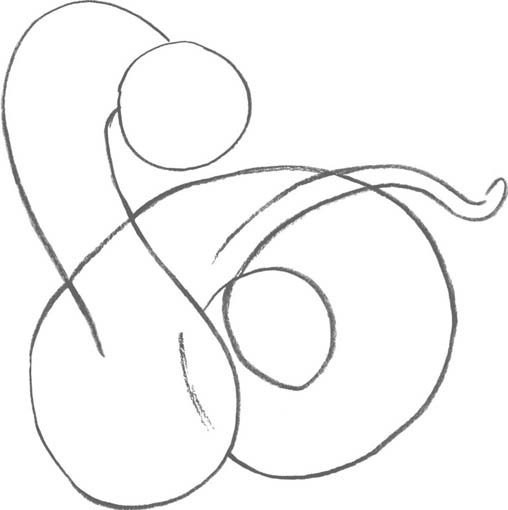
Step One First I use an HB pencil to sketch the body, including the S-shaped neck, the curled torso, and the thin, curved tail.
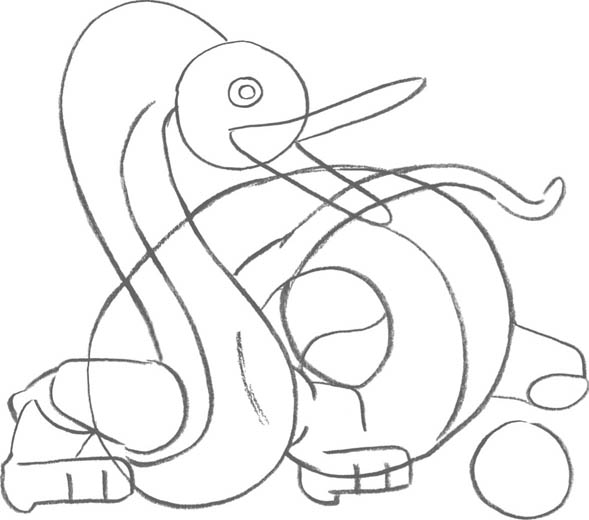
Step Two I add the front legs, feet, mouth, and eye. Then I draw a circle for the pearl. Notice how the beast’s head looks like a duck at this stage.
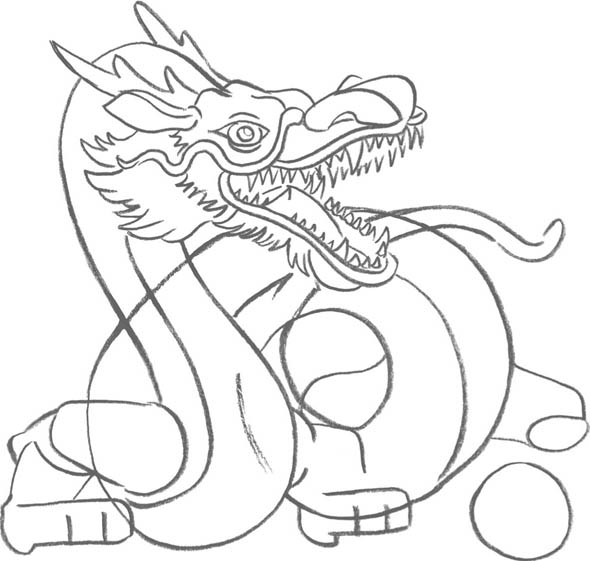
Step Three Turning my attention to the head, I add the details. I draw the antlers at the back of the head, the ear, and the wispy mane on the side of the face. Next I draw the giant nose. I add sharp teeth and a large tongue inside the mouth. I also extend the choppy mane around the mouth, and I add the rest of the details around the nose, eye, and mouth.
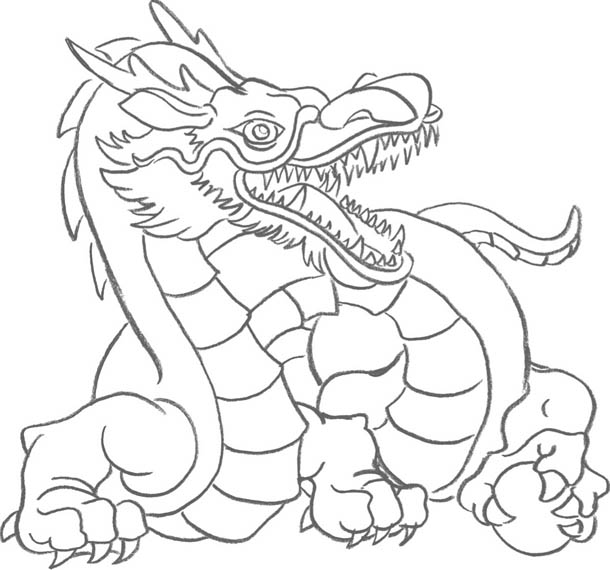
Step Four Using my construction lines, I refine the rest of the body. I make the limbs short and pudgy, adding spikes of skin at the joints. Then I add sharp claws to the feet, and I draw the back foot that grasps the pearl. I add ridges to the dragon’s torso and the underside of the tail, and I erase any unnecessary lines.
Step Five I draw a scale pattern starting at the back of the head and extending to the dragon’s right foreleg. I want the scales to look fishlike, so I use medium-sized U shapes. I begin to create areas of gradation across the scales with a 3B pencil. This pencil is very soft and easily smudged, so I work carefully from left to right (as I am right-handed). Then I move to the face and begin shading the nose, around the eye, and the area near the mane. I also shade the iris and add the dark pupil, leaving a large highlight in the pupil.
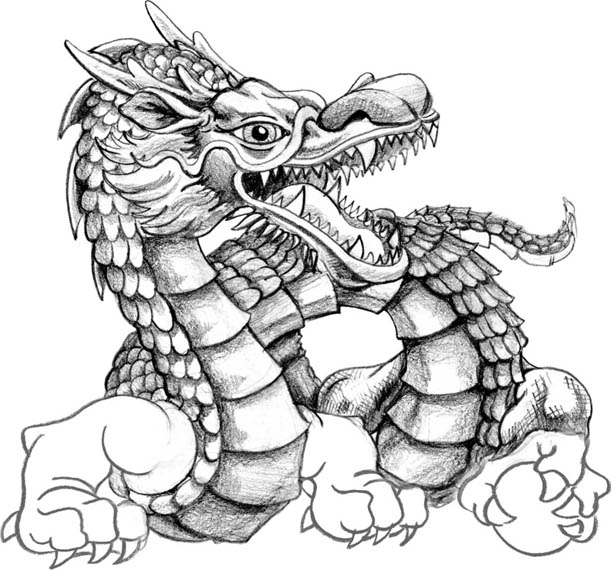
Step Six I continue the scale pattern along the rest of the tail, including the tip. Then I return to the face and shade inside the mouth. I darken the outlines of the teeth, making them more prominent. Next I shade the mane and the scales on the torso and the under-side of the tail. I want this area to look shiny, so I leave many highlights.

Step Seven To give the dragon an entirely different scale pattern on the limbs, I use a simple crosshatching technique to establish a shiny, low-relief scale pattern. I continue that pattern onto the front limbs. Then I begin to add definition to the pearl. The texture of a pearl is very different from the dragon’s scales—I build up tones there very softly, so it looks smooth in comparison with the rough, scaly dragon. Using a vinyl eraser, I remove any stray marks and clean the area around the image. I use a craft knife to carve the eraser so I can work with it in smaller areas. I darken my final tones along the torso, and I fill in the claws, leaving a highlight on each one.
